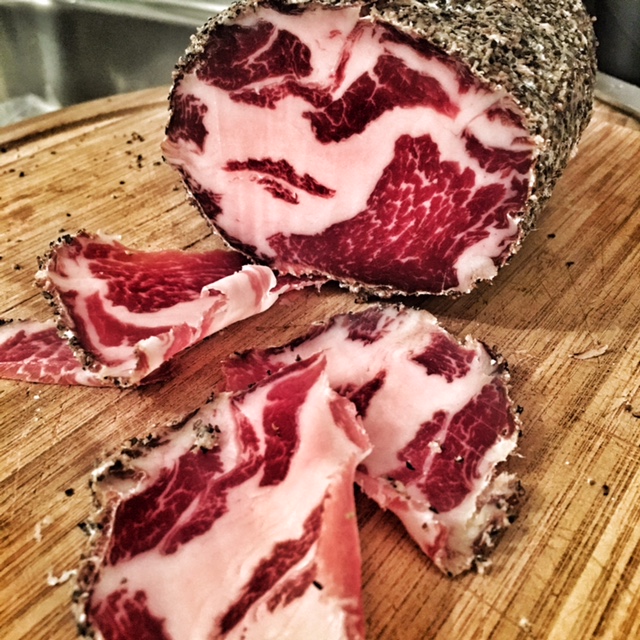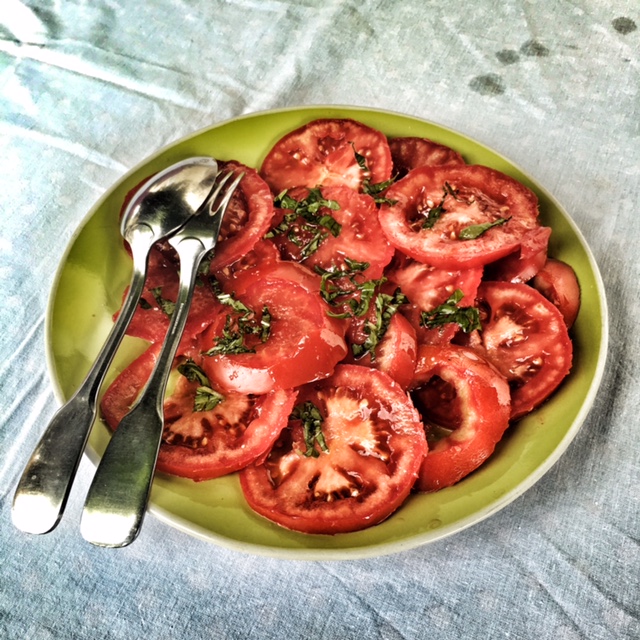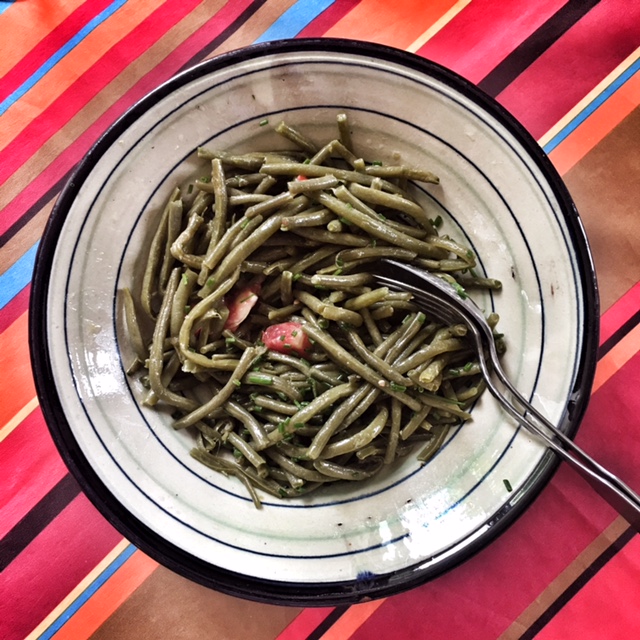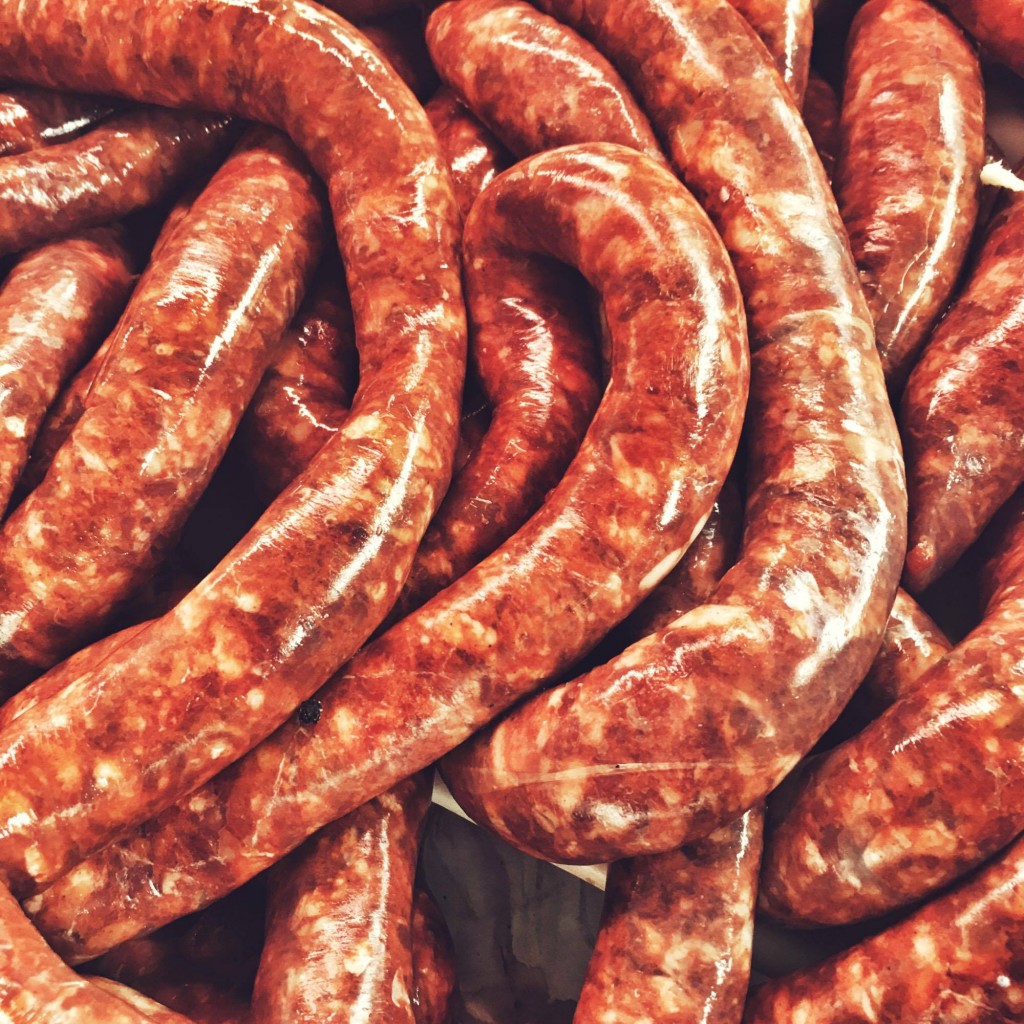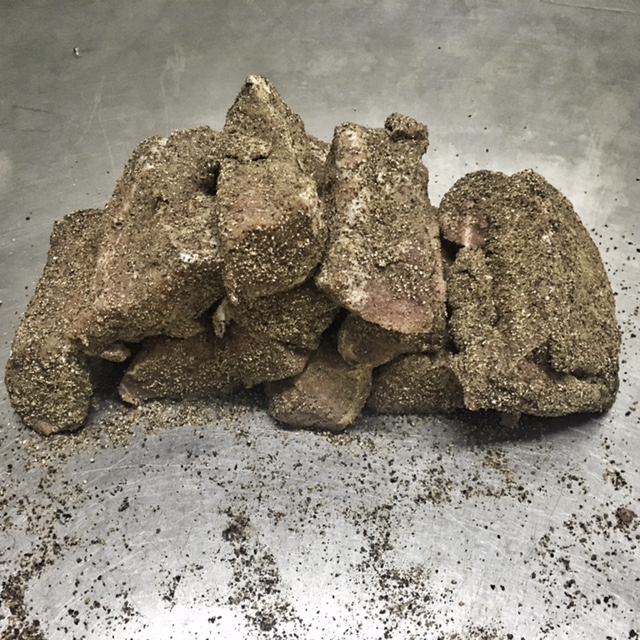In early October, I traveled to Berlin to work with Simon Ellery, founder of The Sausage Man Never Sleeps. Instead of writing about my experience, I produced this video which should give you a better idea of what I'm doing in Europe. Enjoy!
Road Trippin' Across Europe
During my apprenticeship in France, Kate began talking about an upcoming international meat summit. Michael Museth of Folkets Madhus was the organizer and had scheduled an event for late August, in Copenhagen. Kate and Dom were to speak and several international butchers would be in attendance. So like a pup begging for treats, I hounded Kate until she asked the organizer if I could tag along.
Luckily for me, he agreed.
About a week before the trip, Kate and I were discussing our plans. She was to fly into Copenhagen. I had planned to ride the train and catch up with her there, but somewhere along the way we started talking about a road trip. Two days later, coincidentally on my birthday, I received an email from Kate titled “Happy Birthday” with our road trip route included.
The best birthday present!
DAY 1: The morning of our departure, I arrived at Camont as the sun was coming up. I had rented a VW Polo for the trip and had it packed with my travel bag and knives. Kate tossed hers in with mine and I was delighted when she added a hamper full of French charcuterie. Then off we went, road-trippin' to a meat summit in Copenhagen.
Kate and I talked for hours, only stopping for diesel and the occasional pastry or sandwich. We discussed at great length my future plans for a craft butcher shop in the Dallas/Fort Worth Metroplex. She gave me invaluable advice gleaned from her years in the culinary world and her travels around the globe. As the day drug on, she recounted tales from some of these travels – The time she drove an old army flatbed truck across Africa or guided lavish tours through the greatest wine regions and restaurants of France.
She really has done it all.
In the late afternoon, we crossed the border into Germany – near Stuttgart. Kate and I both pondered on the whereabouts of the Autobahn: the famed German motorway of unrestricted speed limits. Never the less, the highway we were on was amply populated with BMWs, Mercedes-Benz, and Porsches proving that Stuttgart was indeed the automobile cradle of the world. Just as the sun set, we hit Frankfurt where we planned to stay the night with one of Kate’s former students.
DAY 2 & TONY: Tony welcomed us into his home where German beer and meat are not in short supply. Kate beckoned for the Noix de Jambon, so I cut into one to allow Tony to sample our wares. In return, he produced an Iberian Coppa he had preserved.
Wow, people say that fat melts in your mouth, well this fat really did!
It was some of the best tasting charcuterie I’d ever had the opportunity to try.
As it turned out, Tony was quite the weekend charcuterie warrior – his kitchen was stocked with various cured meats, fermented vegetables, and a plethora of top-notch kitchen gear. He even had a Jambon Bayonne (dried pork ham) in one of his cabinets.
The next morning, after a breakfast of cold cuts provided by our host, we got back on the Autobahn.
Yeah, Tony laughed when we asked where it was. He informed us that we had been driving on the Autobahn the entire day before.
Around midday, we pulled into a small German village nestled next to some heavily wooded hills and promptly located the local butcher shop. After chatting with the monger and inquiring about a number of his offerings, we made our purchases, including freshly baked bread.
The perfect spot for a picnic.
Finding the perfect picnic spot was not hard. Everything looked like the Von Trapps might skip into at any moment. That night we pulled into Lubeck and had one last good sleep in a hotel before the meat summit.
DAY 3: The smell of the sea filled our nostrils the next morning as we boarded the ferry for Denmark and crossed the Femer Baelt.
Finally, a couple of hours later, the VW Polo pulled into a parking lot marked Folkets Madhus .
After 1,256 miles and 25 hours in the car, we had arrived!
Vide Greniers: the French Garage Sale
vide-greniers: a popular gathering at which individuals expose items that they no longer use, in order to dispose of it in the selling to visitors. Also known as garage sales, fire sales, and flea markets.
Early on in my stay in the Gascon countryside, I heard Maurine talk of her weekend trips to the vide-greniers. She talked about all the fabulous French antiques that each one held and extended an invitation to me to join her and her party for the upcoming weekend's treasure hunt. Unfortunately, I declined due to a previously planned trip to the beach but asked for a rain check instead. In passing, I mentioned I was searching for some really cool vintage butcher’s equipment, especially cleavers, that I could use to decorate my shop. She told me she would keep her eyes peeled for me.
That very next Sunday, on the way to the beach, I got a text from Maurine. In it, was a picture of an old mounted sharpening wheel ... $25!
That was it. I had come down with the “Vide Grenier Fever.”
Every Sunday after that, we woke up early and headed off to whichever nearby town was hosting the vide-greniers for the weekend. It always changed and was never in the same place.
Over the course of a month, I racked up a respectable vintage cleaver collection. I also picked up a few French hat racks for my mother, who had just designed a new hat collection.
Yes, insert shamelsess plug here.
My last “Vide-Grenier Sunday” was very special. Our hunting party consisting of Maurine, Bill, Taff, and I, traveled to the picturesque city of Lectoure. Perched atop a large hill, it provided not only a magnificent view but also a cache of vintage treasures. Sometimes, you find vide-greniers full of junk - after all, they are garage sales, but luckily this was not one of those markets. I ended up procuring two more cleavers for my collection from a booth at the train depot.
One ended up being the best to date.
From the depot, we headed up the hill into town with our Vide-Grenier Fever peaked. Ironically, there along the main street was a disused hospital that had been converted into an antique mall.
I can't think of a more perfect location for bargain hunters with Vide-grenier Fever than in an old, abandoned hospital.
Unfortunately, prices at the Lectoure Antique Market were a bit high and we left empty handed.
On our way back home to Nerac, Maurine wanted to take a different route so we swung through Fourcés, another small French village with a Sunday vide-grenier. The Fourcés Antique Market had a diverse mix of items including a ton of silverware, walking canes with concealed sabers, and even a tractor pull. Somewhere between rummaging between spoons and forks, I stumbled on my greatest find of all the vide-greniers in France – a massive refurbished German cleaver with a two-foot long handle.
This baby was built for some heavy duty splitting!
After a few minutes of haggling with the owner, I separated him from the clever for thirty Euros – an absolute steal.
Je N'ai Plus Faim
Life really does revolve around food in Gascony. Every day from noon to two, the small town of Nerac shuts down and like every other French village, goes really hard at lunchtime – five courses hard. The courses consist of:
- aperitifs and hors d’oeuvres,
- an entrée,
- a salad,
- cheese,
- and a dessert, plus wine and coffee.
Dominique and his wife Christiane are no different. We'd usually wrap up our morning work and start cleaning the processing facility around 11:45. Once it was all scrubbed, I’d pile into Dominique’s car and we would take a short drive down the road to his house where Christiane awaited us.
Let me point something out here – Christiane worked with us in the morning, cutting carcasses, cooking pates, and making sausages. She would sneak out maybe 15 minutes ahead of us and by the time we reached the kitchen table, she always had an incredible French lunch prepared. As Dominique helped her with the final touches, I always set the table - in the French manner, of course.
And then we would feast!
I’ve never eaten like I have in France. Every meal, I absolutely gorged myself into a food-induced coma. Christiane was like a French mother – she kept scooping food onto my plate. I finally had to learn how to say,
'I am not hungry anymore' in French – Je n’ai plus faim.
Luckily, there was always a pot of coffee at the end of every meal to get me back on my feet and back to the facility.
My favorite part of the Chapolard lunches was the company. All throughout the meal and an hour afterward, Dominique, Christiane, and I would talk. We had some amazing exchanges. Their English was much better than my French, so throughout our conversations, I constantly used Google Translate and while Dominique kept his French to English dictionary close at hand. They taught me about French culture and life as well as valuable lessons and tips for my future butcher shop.
In return, I tried my best to describe the Texan way of life, my family, and our ranch. The concept of a "ranch" was very difficult for Dominique to comprehend. We settled on the concept of a "large farm" just for cattle. He will get to see it first hand this January when he comes to visit. I hope he brings Christiane in his suitcase!
I know Dominique and Christiane enjoyed these lunch conversations too. One of the most memorable quotes for me came from Dominique after a long discussion. He had some difficulty translating it at first, so he relayed it to Christiane and she began,
“Fifty percent of what Dominique sells is meat…”
“No, No.” Dominique interrupted.
“Twenty percent of what I sell is meat. Eighty percent is relationships.”
I'm not sure how he settled on that ratio, but he is absolutely right. Relationships are important. I will forever remember these meaningful conversations and these incredible people.
Thank you, Dom & Christiane.
Noix de Jambon
After working with Dominique and the Chapolards on the farm for a few weeks, I finally got their system down. On Monday, we would receive nine or ten pig carcasses, fresh from the abattoir. Each day of the week, we would break a couple carcasses and slowly deplete the pork supply hanging in the walk-in refrigerator. In their place, were our conversions of traditional French charcuterie offerings such as pâtés, blood puddings, paupiettes, graton, and fricandeaux. All of these products, along with fresh cuts like chops and roasts, would be sold at one of the four weekly markets the Chapolard family attends. By the end of each week, the walk-in refrigerator would set empty and delicious charcuterie would be on French tables all across the South of France.
That’s what I call nose-to-tail!
The Chapolards offerings can be sorted into four categories:
- Dried Products:Noix de Jambon, Coppa, and Filet sec
- Fermented Sausages:Saucisson, Saucisse seche, and Chorizo
- Cooked Products:Pâtes, head cheese, roasts, Graton, and blood pudding
- Fresh Products: various fresh sausages, roasts, ventreche roulee, and kabobs
- and of course, the breadwinner of any charcutier, the Jambon de Bayonne.
Here’s the problem – Jambon Bayonne is incredibly hard to produce on a large scale. The hams take up a lot of space and they occupy that space for a year or more. In addition, it's an absolute crapshoot every time you open one up. If any of the meat inside the ham, specifically next to the thighbone, is traumatized before or during slaughter, you have essentially created an 18-month-old stink bomb full of deadly bacteria. Any excess blood left in the ham can also lead to rotted flesh.
Being a charcuterie-making French family, the Chapolards naturally made Jambon Bayonne. Dominique estimated 20% of the Jambon Bayonne his family produced was inedible by the end of the 18-month drying period. He decided this spoilage had to end. After some research and experimentation, he discovered the family should cease making Jambon Bayonne and instead use those hams to make Noix de Jambon.
To create Noix de Jambon, Dominique isolates whole muscles from the ham and dries them individually. This reduces the hang time from 18-months to just six weeks. It also allows him to pick out traumatized protein and other unwanteds that could potentially be hazardous to preservation.
Noix de Jambon is one of Dominique’s best selling items at the farmer's markets. Sliced thin, it is perfect for aperitifs or as a substitute for ham in your favorite recipe.



